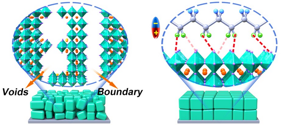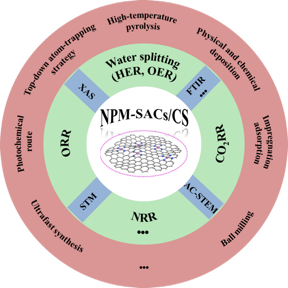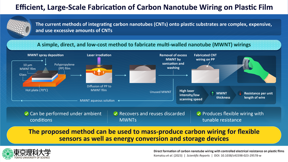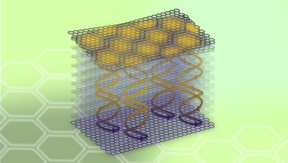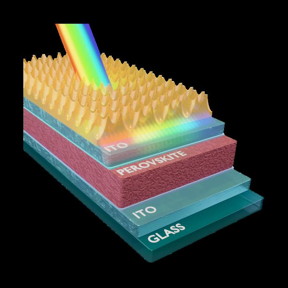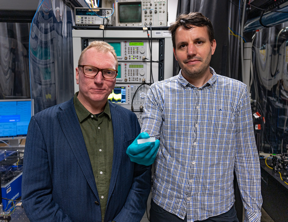Home > Press > Nanonitrator: novel enhancer of inorganic nitrate protective effects, predicated on swarm learning approach
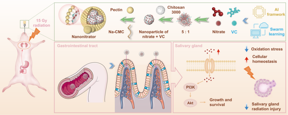 |
| A swarm learning-based drug combination prediction system identifying vitamin C as the optimal drug to be combined with sodium nitrate. This combination improved the bioavailability of sodium nitrate and exerted synergistic effects. Subsequently, the team used microencapsulation technology to prepare a nanoparticle named Nanonitrator, with sodium nitrate and vitamin C as its primary components. Nanonitrator prevented tissue damage in a model of radiation-induced salivary gland injury, verifying their improved efficacy over that of sodium nitrate alone. CREDIT ©Science China Press |
Abstract:
Radiotherapy is currently the main form of treatment for head and neck malignancies such as nasopharyngeal carcinoma. Within the radiation field of a tumor, salivary glands frequently suffer substantial damages following irradiation, resulting in xerostomia and a series of oral syndromes, which seriously impact the quality of patients' lives.
Nanonitrator: novel enhancer of inorganic nitrate protective effects, predicated on swarm learning approach
Beijing, China | Posted on May 12th, 2023In 1998, the research team led by Prof. Songlin Wang established a model of miniature pigs to simulate clinical salivary gland injuries induced by radiation in the head and neck region. The model was employed in a series of studies on the mechanism of radiation-induced salivary gland injuries as well as functional reconstruction of the damaged glands. The team found that exogenous inorganic nitrate supplementation could significantly protect the morphology and function of the salivary glands from radiation injury, suggesting a novel mode of prevention and treatment.
Most existing experimental studies on inorganic nitrate therapy are based on oral administration, including the addition of nitrates to food and drinking water. Orally administered nitrates have low bioavailability, rapid metabolism, and high fluctuation in vivo, making it difficult to achieve pharmacodynamically active concentrations. To resolve these issues and facilitate clinical applications, the team has successfully developed a drug combination prediction system based on swarm learning. Using a deep learning model, the system was trained on drug-pathway interaction data to construct a drug-pathway network. A graph convolutional neural network was used to construct a drug-target network to uncover optimal drug combinations. The system was used to successfully identify vitamin C as the optimal drug for co-administration with sodium nitrate. This finding provides new ideas and methods for drug co-administration, with important clinical implications for the prevention of various diseases.
From this, the optimal nitrate-to-vitamin C ratio was determined using microencapsulation technology for screening and optimization of the controlled release formulation. Thereby a hydrophobic nanodrug named Nanonitrator was prepared, using a core material solution containing sodium nitrate, vitamin C, and chitosan 3000, whereas sodium carboxymethyl cellulose (Na-CMC) and pectin were used as wall materials. The core and wall materials were mixed, lyophilized, and crushed into a powder form. The various pH values of gastrointestinal solutions tested in vitro confirmed that Nanonitrator is suitable in oral dosage forms.
Due to their ability to significantly enhance the signal transduction of the PI3K-Akt pathway, Nanonitrator exhibited better effects in maintaining intracellular homeostasis than sodium nitrate alone or sodium nitrate combined in a physical mixture with vitamin C at equivalent oral doses. Nanonitrator reduced radiation-induced oxidative stress in salivary gland cells, reduced ROS content, maintained cellular calcium homeostasis, protected mitochondrial morphology and function, and decreased the number of apoptotic cells.
These results suggest that Nanonitrator could be developed as a novel therapy of multiple applications, with the potential to play an important role in the prevention and treatment of related chronic diseases. Moreover, this study provides new ideas for the development of novel drugs based on inorganic salts.
####
For more information, please click here
Contacts:
Media Contact
Bei Yan
Science China Press
Expert Contacts
Prof. Xiaogang Wang
School of Engineering Medicine, Beihang University
Prof. Yuji Wang
School of Pharmaceutical Sciences, Capital Medical University
Prof. Songlin Wang
Capital Medical University
Copyright © Science China Press
If you have a comment, please Contact us.Issuers of news releases, not 7th Wave, Inc. or Nanotechnology Now, are solely responsible for the accuracy of the content.
| Related Links |
| Related News Press |
News and information
![]() Laser direct writing of Ga2O3/liquid metal-based flexible humidity sensors May 12th, 2023
Laser direct writing of Ga2O3/liquid metal-based flexible humidity sensors May 12th, 2023
![]() Breakthrough in the optical properties of MXenes - two-dimensional heterostructures provide new ideas May 12th, 2023
Breakthrough in the optical properties of MXenes - two-dimensional heterostructures provide new ideas May 12th, 2023
![]() Novel design perovskite electrochemical cell for light-emission and light-detection May 12th, 2023
Novel design perovskite electrochemical cell for light-emission and light-detection May 12th, 2023
Cancer
![]() New Developments in Biosensor Technology: From Nanomaterials to Cancer Detection April 14th, 2023
New Developments in Biosensor Technology: From Nanomaterials to Cancer Detection April 14th, 2023
![]() Implantable device shrinks pancreatic tumors: Taming pancreatic cancer with intratumoral immunotherapy April 14th, 2023
Implantable device shrinks pancreatic tumors: Taming pancreatic cancer with intratumoral immunotherapy April 14th, 2023
![]() Getting drugs across the blood-brain barrier using nanoparticles March 3rd, 2023
Getting drugs across the blood-brain barrier using nanoparticles March 3rd, 2023
Possible Futures
![]() Researchers at Purdue discover superconductive images are actually 3D and disorder-driven fractals May 12th, 2023
Researchers at Purdue discover superconductive images are actually 3D and disorder-driven fractals May 12th, 2023
![]() Laser direct writing of Ga2O3/liquid metal-based flexible humidity sensors May 12th, 2023
Laser direct writing of Ga2O3/liquid metal-based flexible humidity sensors May 12th, 2023
![]() Breakthrough in the optical properties of MXenes - two-dimensional heterostructures provide new ideas May 12th, 2023
Breakthrough in the optical properties of MXenes - two-dimensional heterostructures provide new ideas May 12th, 2023
![]() Novel design perovskite electrochemical cell for light-emission and light-detection May 12th, 2023
Novel design perovskite electrochemical cell for light-emission and light-detection May 12th, 2023
Nanomedicine
![]() Nanobiotechnology: How Nanomaterials Can Solve Biological and Medical Problems April 14th, 2023
Nanobiotechnology: How Nanomaterials Can Solve Biological and Medical Problems April 14th, 2023
![]() Implantable device shrinks pancreatic tumors: Taming pancreatic cancer with intratumoral immunotherapy April 14th, 2023
Implantable device shrinks pancreatic tumors: Taming pancreatic cancer with intratumoral immunotherapy April 14th, 2023
![]() Scientists push the boundaries of manipulating light at the submicroscopic level March 3rd, 2023
Scientists push the boundaries of manipulating light at the submicroscopic level March 3rd, 2023
![]() Lipid nanoparticles highly effective in gene therapy March 3rd, 2023
Lipid nanoparticles highly effective in gene therapy March 3rd, 2023
Discoveries
![]() Laser direct writing of Ga2O3/liquid metal-based flexible humidity sensors May 12th, 2023
Laser direct writing of Ga2O3/liquid metal-based flexible humidity sensors May 12th, 2023
![]() Breakthrough in the optical properties of MXenes - two-dimensional heterostructures provide new ideas May 12th, 2023
Breakthrough in the optical properties of MXenes - two-dimensional heterostructures provide new ideas May 12th, 2023
Announcements
![]() Laser direct writing of Ga2O3/liquid metal-based flexible humidity sensors May 12th, 2023
Laser direct writing of Ga2O3/liquid metal-based flexible humidity sensors May 12th, 2023
![]() Breakthrough in the optical properties of MXenes - two-dimensional heterostructures provide new ideas May 12th, 2023
Breakthrough in the optical properties of MXenes - two-dimensional heterostructures provide new ideas May 12th, 2023
![]() Novel design perovskite electrochemical cell for light-emission and light-detection May 12th, 2023
Novel design perovskite electrochemical cell for light-emission and light-detection May 12th, 2023
Interviews/Book Reviews/Essays/Reports/Podcasts/Journals/White papers/Posters
![]() Researchers at Purdue discover superconductive images are actually 3D and disorder-driven fractals May 12th, 2023
Researchers at Purdue discover superconductive images are actually 3D and disorder-driven fractals May 12th, 2023
![]() Laser direct writing of Ga2O3/liquid metal-based flexible humidity sensors May 12th, 2023
Laser direct writing of Ga2O3/liquid metal-based flexible humidity sensors May 12th, 2023
![]() Breakthrough in the optical properties of MXenes - two-dimensional heterostructures provide new ideas May 12th, 2023
Breakthrough in the optical properties of MXenes - two-dimensional heterostructures provide new ideas May 12th, 2023
![]() Novel design perovskite electrochemical cell for light-emission and light-detection May 12th, 2023
Novel design perovskite electrochemical cell for light-emission and light-detection May 12th, 2023
Nanobiotechnology
![]() Nanobiotechnology: How Nanomaterials Can Solve Biological and Medical Problems April 14th, 2023
Nanobiotechnology: How Nanomaterials Can Solve Biological and Medical Problems April 14th, 2023
![]() Implantable device shrinks pancreatic tumors: Taming pancreatic cancer with intratumoral immunotherapy April 14th, 2023
Implantable device shrinks pancreatic tumors: Taming pancreatic cancer with intratumoral immunotherapy April 14th, 2023
![]() HKUMed invents a novel two-dimensional (2D) ultrasound-responsive antibacterial nano-sheets to effectively address bone tissue infection March 24th, 2023
HKUMed invents a novel two-dimensional (2D) ultrasound-responsive antibacterial nano-sheets to effectively address bone tissue infection March 24th, 2023
![]() Lipid nanoparticles highly effective in gene therapy March 3rd, 2023
Lipid nanoparticles highly effective in gene therapy March 3rd, 2023
- SEO Powered Content & PR Distribution. Get Amplified Today.
- PlatoAiStream. Web3 Data Intelligence. Knowledge Amplified. Access Here.
- Minting the Future w Adryenn Ashley. Access Here.
- Buy and Sell Shares in PRE-IPO Companies with PREIPO®. Access Here.
- Source: http://www.nanotech-now.com/news.cgi?story_id=57344
- :has
- :is
- :not
- 10
- 1998
- 2023
- 27th
- 2D
- 2D materials
- 3d
- 3rd
- 8
- a
- ability
- accuracy
- Achieve
- across
- active
- actually
- addition
- address
- administered
- administration
- aggressive
- alone
- an
- and
- applications
- approach
- April
- ARE
- around
- AS
- At
- barrier
- based
- BE
- Beijing
- Better
- BONE
- boundaries
- Breaking
- Broken
- Brown University
- by
- CAN
- Cancer
- capital
- causes
- Cells
- Center
- CGI
- China
- click
- Clinical
- COM
- combination
- combinations
- combined
- comment
- components
- CONFIRMED
- construct
- content
- controlled
- convolutional neural network
- Core
- could
- credit
- Currently
- data
- debate
- deep
- deep learning
- demonstrates
- describe
- Design
- determined
- developed
- Development
- developments
- device
- difficult
- direct
- discover
- discovered
- diseases
- dna
- dosage
- drug
- Drugs
- Effective
- effectively
- effects
- efficacy
- employed
- end
- Engineering
- enhance
- Equivalent
- established
- Ether (ETH)
- existing
- facilitate
- field
- finding
- First
- first time
- flexible
- fluctuation
- following
- food
- For
- form
- forms
- formulation
- found
- frequently
- from
- function
- functional
- gif
- graph
- Graphene
- Have
- head
- helps
- High
- highly
- hinders
- How
- http
- HTTPS
- ideas
- identify
- identifying
- if
- images
- Impact
- implications
- important
- improved
- in
- Inc.
- Including
- information
- interaction
- International
- into
- issues
- IT
- ITS
- January
- learning
- Led
- light
- links
- Liver
- Lives
- long-standing
- Low
- Main
- Making
- manipulating
- March
- material
- materials
- May..
- mechanism
- medical
- medicine
- method
- methods
- mixed
- mixture
- Mode
- model
- molecular
- more
- Moreover
- multiple
- Named
- Nanomaterials
- nanotechnology
- net
- network
- Neural
- neural network
- New
- news
- novel
- now
- number
- of
- on
- optimal
- optimization
- or
- Origin
- over
- patients
- Pharmaceutical
- PHP
- physical
- plato
- Plato Data Intelligence
- PlatoData
- Play
- please
- Post
- posted
- potential
- prediction
- Prepare
- prepared
- press
- Press Release
- Prevention
- primary
- probe
- properties
- protect
- protected
- Protective
- provide
- provides
- Push
- quality
- Radiation
- rapid
- ratio
- Reduced
- region
- related
- release
- Releases
- repair
- research
- researchers
- responsible
- resulting
- Results
- return
- Role
- Save
- Science
- SCIENCES
- scientists
- screening
- Search
- Series
- settles
- Share
- Signal
- significantly
- solution
- Solutions
- SOLVE
- Spin
- start
- stress
- structure
- studies
- Study
- submit
- Subsequently
- substantial
- Successfully
- such
- suggest
- suitable
- Swarm
- system
- team
- Technology
- than
- that
- The
- their
- therapy
- thereby
- These
- this
- time
- to
- trained
- treatment
- uncover
- university
- us
- used
- using
- Values
- various
- verifying
- vivo
- Wall
- was
- Water
- Wave
- WELL
- were
- which
- with
- within
- writing
- Yahoo
- you
- zephyrnet












